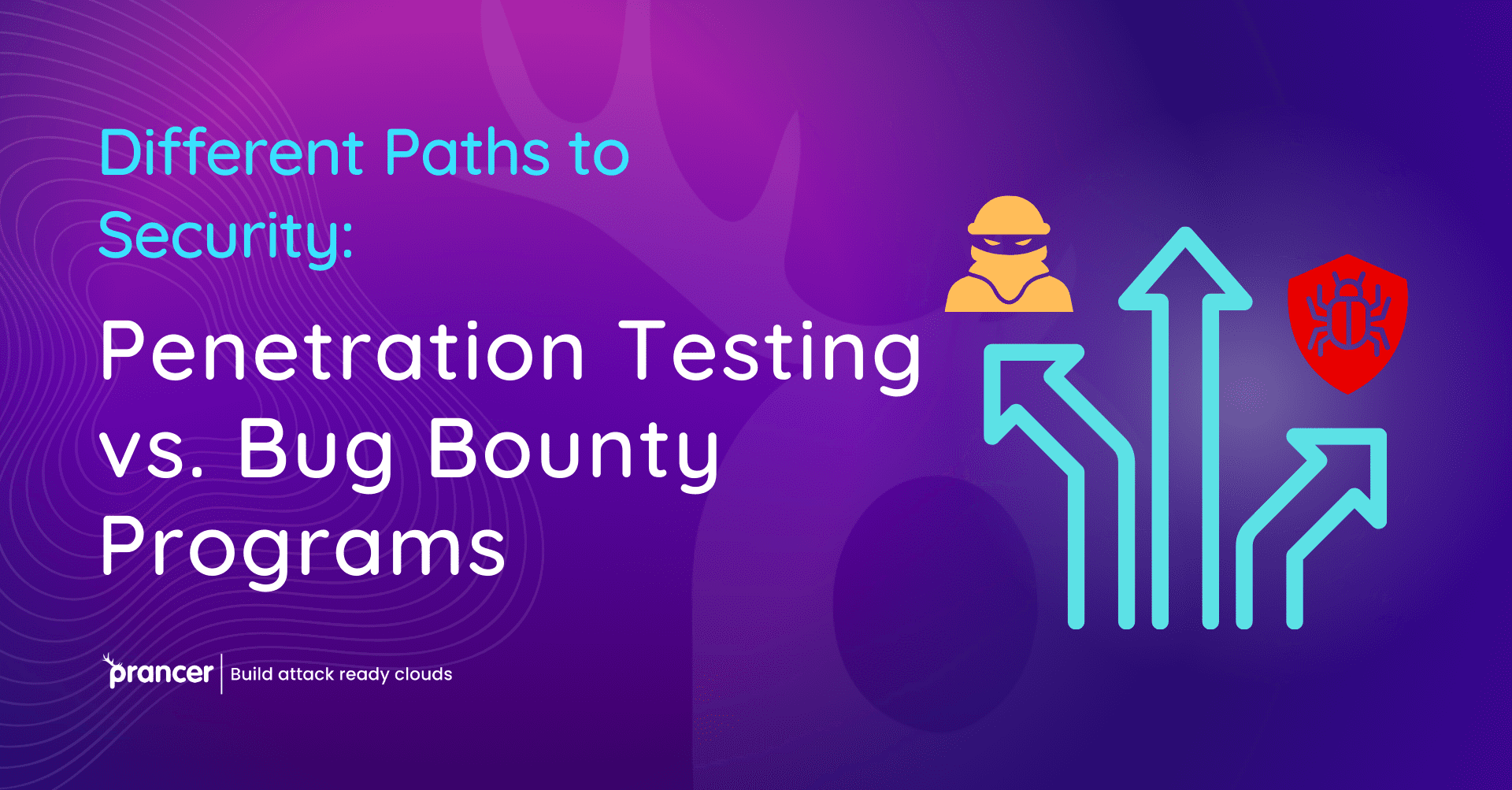

To this extent, it is transformative for individuals and organizations to protect their digital interfaces than ever before. Penetration tests and bug bounty are two common ways to find and fix security issues. So where does that leave you and your business, wondering which one is the best for you? But here at Sicher, we will not leave the issue of penetration testing vs bug bounty undecided; in this article, we will present all the pros and cons of each approach. We will also discover more on how Prancer, the market leader in xss tools, fits in to boost your organization’s security by means of automated penetration testing.
The term “Pen testing” or Penetration testing refers to the act of engaging in an attack on a hacker’s own computer system in order determine whether there are obvious weaknesses in the system. Hire a unicorn to scare a wolf away, in this case, a wolf would refer to an actual hacker with ill intent towards your well-being.
A bug bounty program is a form of crowd-sourced penetration testing a company or Software Client issues to individuals, commonly known as bounty hunters to identify and report security flaws in the software. This crowd-sourcing mechanism does involve the skills of many testers in achieving this set goal of identifying some problems that internal testers might overlook.
This paper aims at comparing and contrasting two concepts in cybersecurity; penetration testing and bug bounty programs.
Extent and frequency: While penetration testing is normally a one-time, thorough assessment carried out within a specific timeframe. But bug bounty programs are usually more extended and can be implemented indefinitely, constantly inviting the participants to submit new bugs.
Methodology As for penetration testing, it is also an organized and thorough approach which may be planned in advance to address certain objectives and constraints. Bug bounty programs are relatively more ambiguous, and it can be accessed by people from various skills and expertise.
Cost Penetration testing tends to be cheaper than bug bounty programs since costs are incurred at the beginning of the testing process where a fixed price is likely to be agreed before work starts, and it is not uncommon for expenses to escalate where bugs are discovered and reported.
Tackling now directly the topic of the paper, the role of automated penetration testing, it has to be emphasized that the subject is thoroughly researched and currently widely implemented.
Automated penetration testing involves computer programs, which perform tests otherwise done by hand. It is easy to conduct and will give a rather large view of the possible issues, within a short amount of time. It enhances the effectiveness of traditional pen testing in terms of speed and coverage of networks.
Prancer is a technological advancement that automates the penetration testing and provides specialized and ongoing security reviews. Automated penetration testing reduces the risk and chance of an organization being exploited since through Prancer, the weakness and loopholes are detected and solved soon.
However, it would like to conclude that to choose between penetration testing and bug bounty programs, one must take into consideration certain factors. As a type of security assessment, penetration testing itself is most valuable as a one-time, comprehensive evaluation. If you want to carry out continuous monitoring and leverage a stronger variety of skills, then a bug bounty program will be better.
Let’s assume that a particular company was able to benefit from Prancer’s ASP. NET automated penetration testing. Through leveraging of Prancer suite tools, they were able to respond quickly on which vulnerabilities are open and which of them have to be closed, so that the organization’s security was enriched substantially.
Penetration testing and bug bounty programs have important roles for cybersecurity in charge. It is pertinent to understand these differences, benefits, and even use tools for risk formulations such as Prancer’s Automated Penetration testing to shield your systems from cyber threats.
Penetration testing is a type of assessment that is strategic and performed only once while bug bounty programs are a continuous approach that enlist the help of the public.
Automated penetration testing can assist but should not fully replace manual testing since human beings are an excellent resource for recognizing tricky vulnerabilities to penetrate.
Prancer on the other hand is designed to mimic several kinds of Cyber attacks through software to help with quick fixes on threats.
The vulnerability programs can be scaled to afford organizations of all sizes to have continuous assessment on exposures to risks.
Penetration testing should be carried out at least once in a year or the time the system has been modified.
